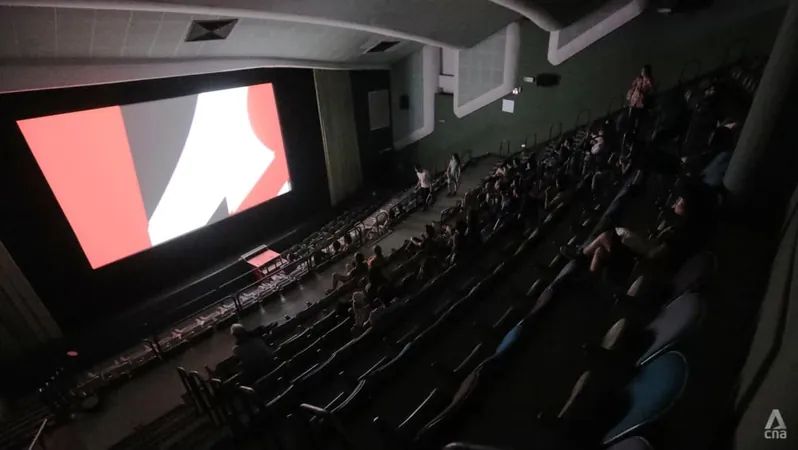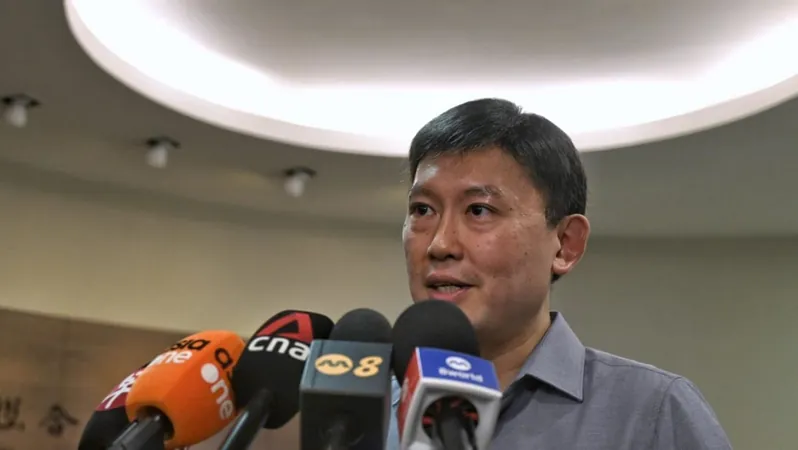
Groundbreaking Breakthrough: Scientists Create a 'Time Crystal' with Giant Atoms—A Concept Once Thought Impossible!
2025-07-20
Author: John Tan
The Dawn of Time Crystals
In a astonishing leap for science, researchers have taken the first concrete steps towards realizing the concept of a 'time crystal'—a structure that oscillates endlessly in time, much like a traditional crystal does in space. The idea, initially posed by Nobel laureate Frank Wilczek in 2012, often seemed more like science fiction than reality.
A Revolutionary Experiment at Tsinghua University
Fast forward over a decade, and a team at Tsinghua University, in collaboration with experts from the Vienna University of Technology, has made significant strides. They observed rubidium vapor settling into a rhythmic pattern, bringing Wilczek's visionary idea closer to existence. Professor Thomas Pohl, a key player in this research, claims this marks a near-actualization of the theory.
What Sets Time Crystals Apart?
Unlike ordinary crystals that repeat their structure in space, time crystals operate on a temporal level, breaking the traditional uniformity of time. Imagine a tick-tock of a clock that maintains a rhythm even when undisturbed—this persistent tick is known as spontaneous symmetry breaking.
A Breakthrough at Room Temperature
Previous experiments involving time crystals were confined to ultracold temperatures or had fleeting lifespans. However, this new rubidium system operates at room temperature, allowing it to maintain its rhythm for hundreds of milliseconds—enough time to observe thousands of oscillations. This durability turns an ordinary glass cell into a pioneering research tool for exploring nonequilibrium phases of matter!
Dancing with Giant Atoms
At the core of this experiment are Rydberg atoms—giant rubidium atoms with electrons so far from the nucleus that they swell to nearly a micron across. These massive atoms interact over elongated distances, creating dynamic communities within the vapor.
When lasers are used to excite two separate Rydberg levels, a captivating tug-of-war emerges, producing limit-cycle oscillations observable as light ripples. Just as a crowd can synchronize their claps, these atoms aligned their rhythms, maintaining coherence for at least 80 cycles.
The Laser's Quiet Power
Remarkably, the oscillations occurred without any adjustments in the lasers' intensity or frequency. This self-organization showcases the clear signature of a continuous time crystal. Further analysis revealed stable spectral peaks, confirming moments of synchronized timekeeping.
The Power of Many-Body Interactions
This groundbreaking research emphasizes how collective interactions among multiple particles create timekeeping mechanisms that a single atom can't replicate. As theorists predicted, the presence of two laser-driven levels significantly transformed the system's behavior.
Applications That Could Change the Game
The implications of this find are monumental. Operating at room temperature allows for potential integration with microfabricated chips—possibly paving the way for cutting-edge sensors and devices that harness the remarkable properties of time crystals.
From observing chemical reactions to predicting economic cycles, the lessons gleaned could revolutionize multiple fields. Scientists are also exploring whether time-crystal phases could synchronize distant quantum nodes, enhancing the efficiency of quantum communication.
An Ongoing Mystery
Despite these promising developments, questions linger. Can a true dissipation-free time crystal ever exist, or is some coupling with the environment necessary? Further experiments are set to explore these uncertainties and delve into the quantum realm of time crystals.
A Published Triumph
For those eager to dive deeper into this incredible research, the study is published in the prestigious journal Nature Physics. Subscribe for insightful articles, exclusive content, and the latest updates in the fast-evolving world of science!





 Brasil (PT)
Brasil (PT)
 Canada (EN)
Canada (EN)
 Chile (ES)
Chile (ES)
 Česko (CS)
Česko (CS)
 대한민국 (KO)
대한민국 (KO)
 España (ES)
España (ES)
 France (FR)
France (FR)
 Hong Kong (EN)
Hong Kong (EN)
 Italia (IT)
Italia (IT)
 日本 (JA)
日本 (JA)
 Magyarország (HU)
Magyarország (HU)
 Norge (NO)
Norge (NO)
 Polska (PL)
Polska (PL)
 Schweiz (DE)
Schweiz (DE)
 Singapore (EN)
Singapore (EN)
 Sverige (SV)
Sverige (SV)
 Suomi (FI)
Suomi (FI)
 Türkiye (TR)
Türkiye (TR)
 الإمارات العربية المتحدة (AR)
الإمارات العربية المتحدة (AR)